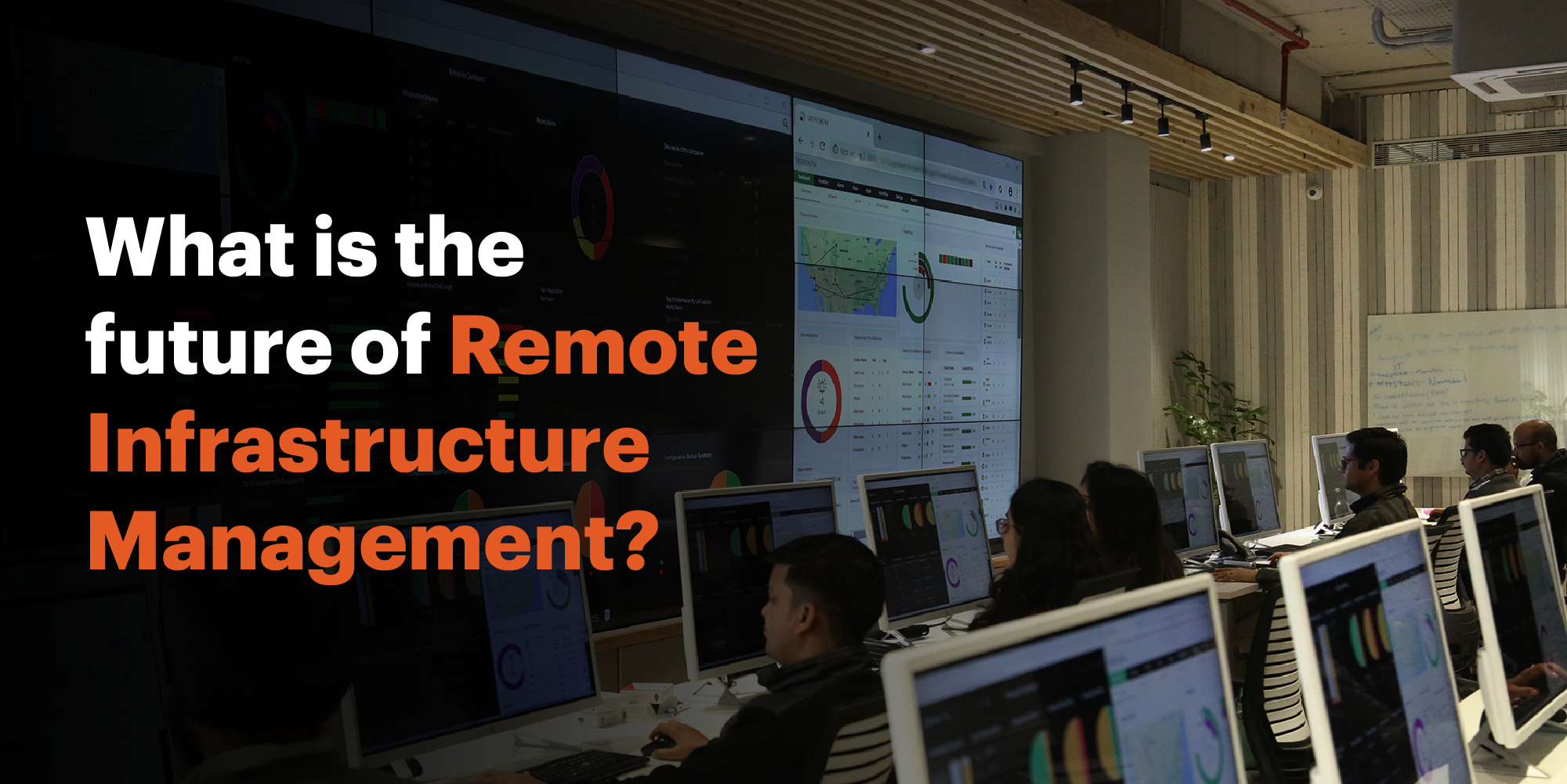A decade ago, an organisation handling the IT infrastructure for another organisation seemed like a big deal and somewhat tricky. It was almost like a stranger taking care of your personal belongings. However, nowadays, it is a common practice that companies outsource infrastructure management to experts.
The practice of remote IMS came into existence ten years ago; however, it gained popularity in 2020, when the world had no choice but to be locked in a room. Everyone shifted to RIM for remote IMS, whether a small start-up or a multinational company.
What is Remote Infrastructure Management?
Remote infrastructure management is a process to monitor and manage everyday IT operations without being physically present at the location. This practice is becoming increasingly popular in organisations of all sizes and industries.
RIM adds significant value to the IT systems, increases working efficiency, improves service availability, and reduces costs. Generally, it includes network monitoring and management, remote monitoring, database administration, desktop and server administration, and security services.
The IT infrastructure management landscape has taken a 180-degree turn from what it looked like almost two years ago. Earlier, taking care of management and monitoring was at utmost priority. However, organisations are dependent on RIM solutions to meet challenges.
Remote Infrastructure Management Challenges
Some of the remote infrastructure management systems face a bunch of challenges. These are as follows:
- Growth and Scalability
A survey by LogicMonitor revealed that only 39% of IT decision-makers believe that their organisation can provide continuous availability uptime during crises; however, 54% are partly confident. There are several solutions designed for IT leaders regarding uptime during crises. Fewer powers are likely to persist with better IT virtualisation, leading to business continuity. The professionals should be dependent on the RIM solutions, which scales at nearly the same rate as their organisation.Security - Security
For any organisation, security is one of the major concerns. With the work-from-home model, organisations are more prone to security challenges. In 2020, nearly 800,000 internet crime incidents were suspected, whereas, in 2019, 300,000 internet crimes led to huge losses of over USD 4 billion. Out of all reported crimes, phishing remains at the top. CIOs of India and the world are in search of an adequate RIM solution that improves data security while maintaining employees’ overall performance and productivity.
- Costs
Another major challenge is cost. For most CIOs, RIM cost remains a bugbear. Since RIM is a newer technology, there are infrastructure management service providers that charge thousands of US dollars for providing services. Investing in monitoring software offers more significant value for money. These programs are designed to do everything any RIM service provider will do at an affordable cost without adding extra charges.
Regardless of the fact that the organisations should go for monitoring software or a service provider, the cost involved should always provide a decent investment return.
- Automation
The software automates remote monitoring; however, monitoring and management tools offer better performance than others. It is because RIM is still a newer concept, and service providers are still working out the finer details.
- AI/Machine Learning
RIM and AI/Machine learning have a long history as they have struggled a lot; however, it is changing now. Some tools take complete advantage of such technologies and provide valuable insights to users. It helps CIOs to resolve issues and suggest smarter solutions. Although not all remote management tools depend on such technologies, the software procurement team needs to run thorough market research to find a reliable platform.
- Cloud
Cloud and RIM are like two best friends. With the help of IT virtualisation, CIOs and Cloud environment can go hand-in-hand, leading to the following benefits:- Cloud eliminates the physical hardware.
- It safeguards data for governance and security purposes.
- No matter where the team members are in the world, they can access data easily.
- Cloud is energy efficient.
- It protects the data effectively.
- It scales better.
- It saves cost.
- With many business leaders still unsure about cloud technology, full virtualisation seems like a long journey as it brings a lot of challenges. However, with advanced tools, these challenges can be tackled efficiently.
What Is the Future for Remote Infrastructure Management?
Today, organisations are moving towards remote IMS. Experts say the RIM market will touch USD 54.5 billion by 2027. In contrast, the storage system and database management will grow from 10% to 10.4% in the next five years. It is believed that the United States and China will emerge as top countries to invest in RIM.
With such massive growth in the near future, one can expect more innovative and effective RIM innovations. It is believed that RIM can also enter the space of small businesses that primarily rely on manual processes to monitor and manage data.
Conclusion
For years, RIM has been around in some way or the other. However, with the rise in the work-from-home concept, remote management grabbed the centre stage. Despite the many challenges it involves, RIM will be the future of the IT world and other industries as well. We understand your needs and identify, integrate, and support high-quality and affordable IT Solutions in hardware. For more such articles, visit us.
